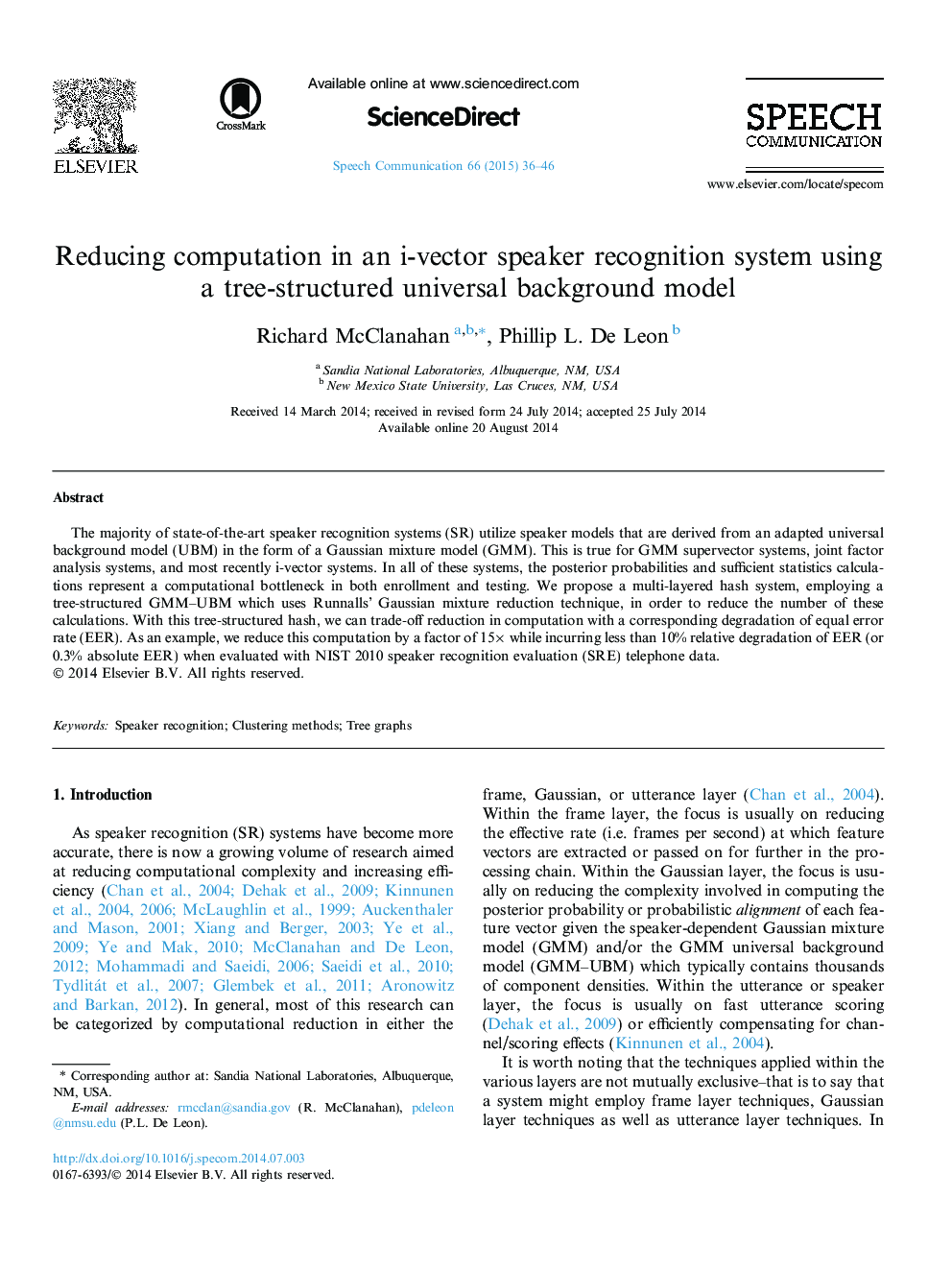| Article ID | Journal | Published Year | Pages | File Type |
|---|---|---|---|---|
| 6961179 | Speech Communication | 2015 | 11 Pages |
Abstract
The majority of state-of-the-art speaker recognition systems (SR) utilize speaker models that are derived from an adapted universal background model (UBM) in the form of a Gaussian mixture model (GMM). This is true for GMM supervector systems, joint factor analysis systems, and most recently i-vector systems. In all of these systems, the posterior probabilities and sufficient statistics calculations represent a computational bottleneck in both enrollment and testing. We propose a multi-layered hash system, employing a tree-structured GMM-UBM which uses Runnalls' Gaussian mixture reduction technique, in order to reduce the number of these calculations. With this tree-structured hash, we can trade-off reduction in computation with a corresponding degradation of equal error rate (EER). As an example, we reduce this computation by a factor of 15Ã while incurring less than 10% relative degradation of EER (or 0.3% absolute EER) when evaluated with NIST 2010 speaker recognition evaluation (SRE) telephone data.
Related Topics
Physical Sciences and Engineering
Computer Science
Signal Processing
Authors
Richard McClanahan, Phillip L. De Leon,
